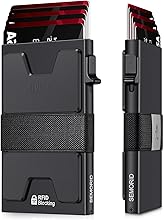
As NDP-Liberal deal ends, what would it take to trigger an election?
Global News
A confidence vote is likely in the coming weeks or months after the NDP "ripped up" the supply and confidence agreement. Here's what that means and whether it may trigger a vote.
As soon as NDP Leader Jagmeet Singh announced he had “ripped up” the supply and confidence agreement with the Liberal government Wednesday, one big question loomed above all others: will Canadians face a snap election this year?
No one seems to know for sure — not even Singh himself.
“I know this now means that election timing has become more uncertain (and) more likely,” he told reporters Thursday.
“I will look at any vote that comes before us and we will make a decision in the best interest of Canadians, as any minority government normally operates,” he said.
Canada’s fixed election date law means a federal election must happen no later than October 2025. The implosion of the NDP-Liberal deal, which was meant to keep the Liberals in power until June 2025 in exchange for mutually agreeable policies like dental care, now raises the possibility of an earlier vote.
But political analysts tend to agree that the NDP won’t immediately try to topple the government when the House of Commons reconvenes on Sept. 16. That’s partly thanks to the rules of the House, but also because the party may want some time to make the case to voters as a true alternative to the surging Conservatives.
“I do think there’s a little bit of time there (where the NDP will be able to) distance itself from the Liberals and tell the NDP story exclusive from that, that will be very helpful,” said Mélanie Richer, a principal in communications and public affairs at Earnscliffe Strategies and a former communications director for Singh who also worked on the last two NDP campaigns.
A test of confidence in the government is now a major possibility in the coming fall session — and all eyes will be on how the NDP chooses to cast their votes if one does come.





















 Run 3 Space | Play Space Running Game
Run 3 Space | Play Space Running Game Traffic Jam 3D | Online Racing Game
Traffic Jam 3D | Online Racing Game Duck Hunt | Play Old Classic Game
Duck Hunt | Play Old Classic Game











